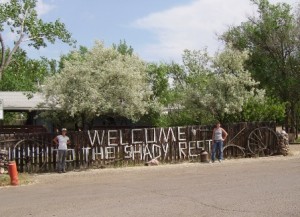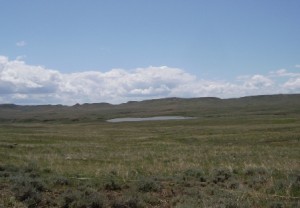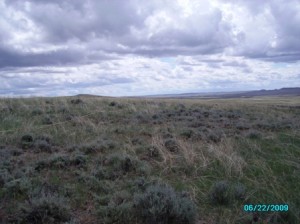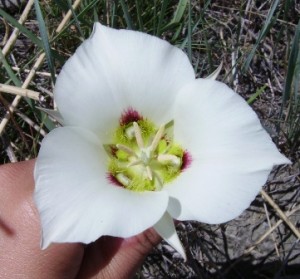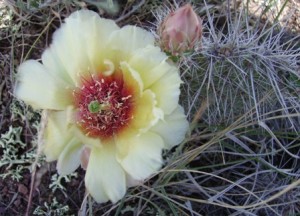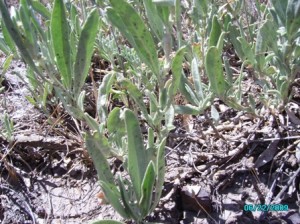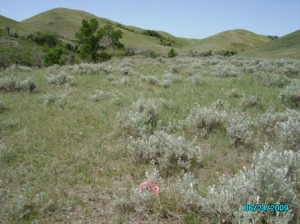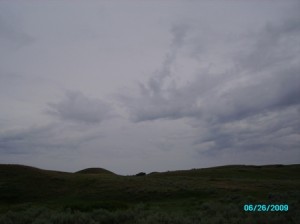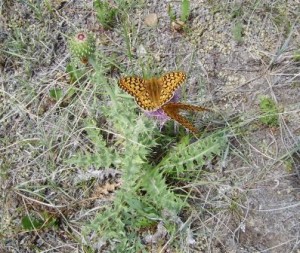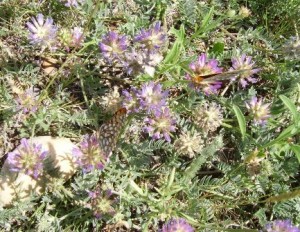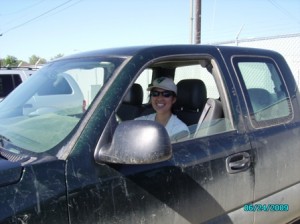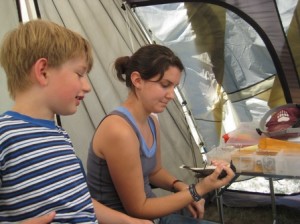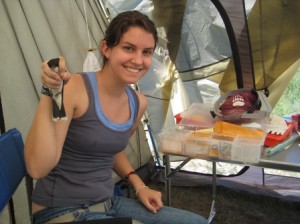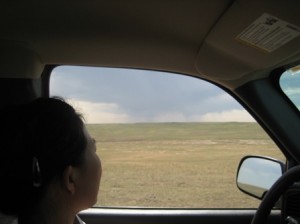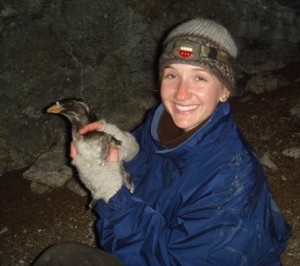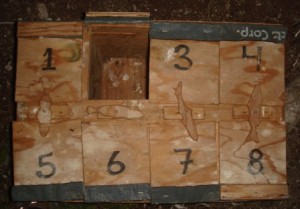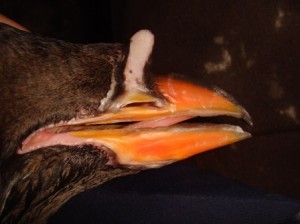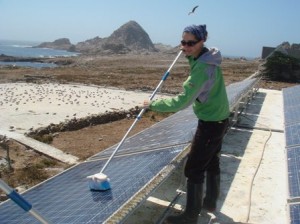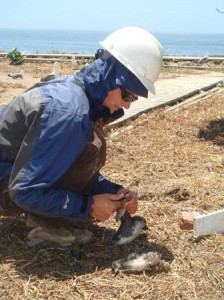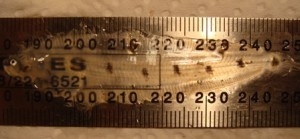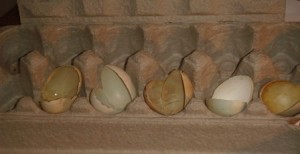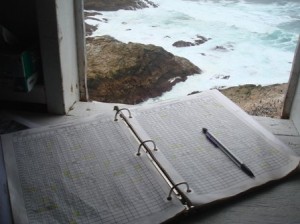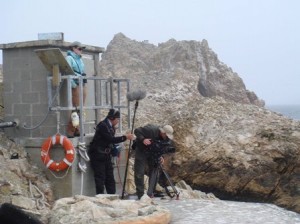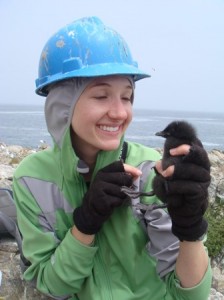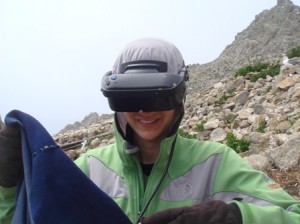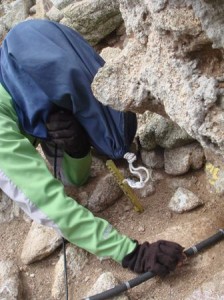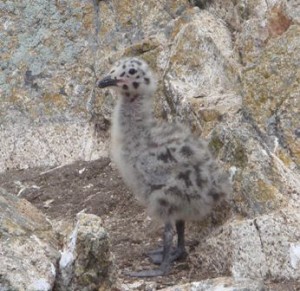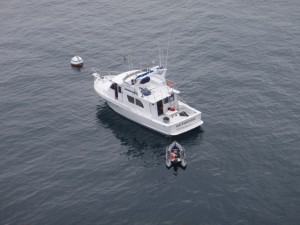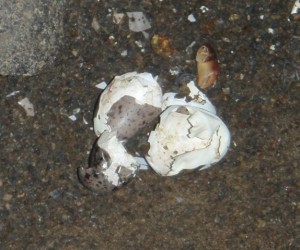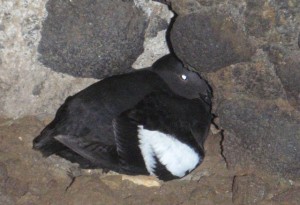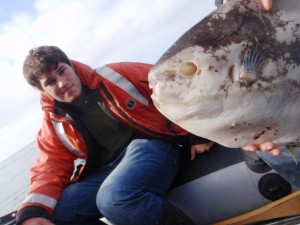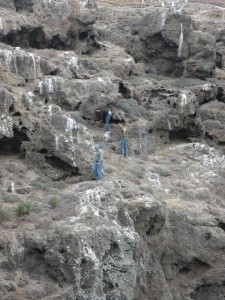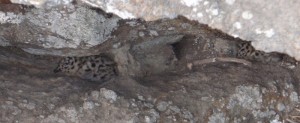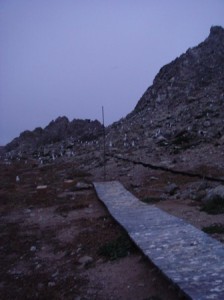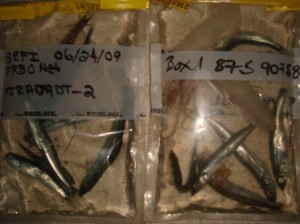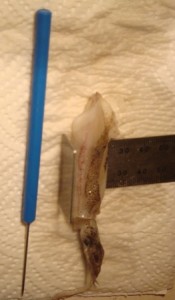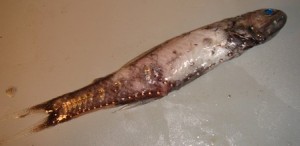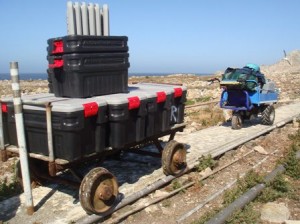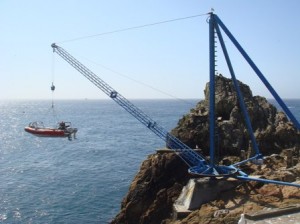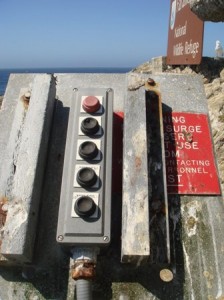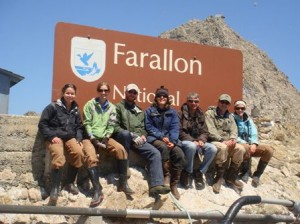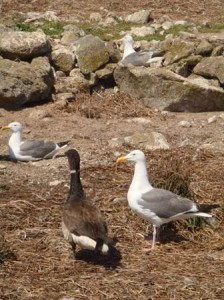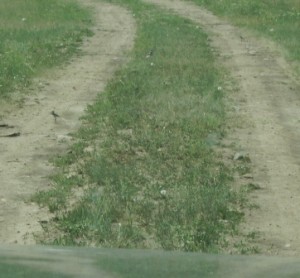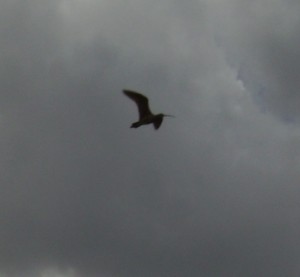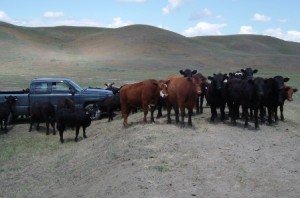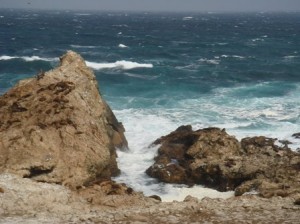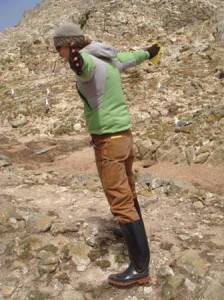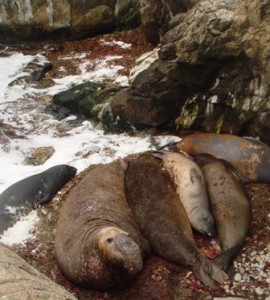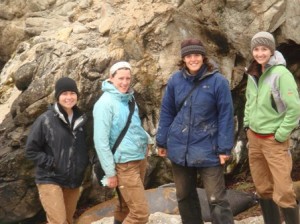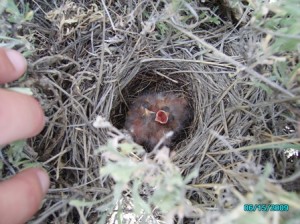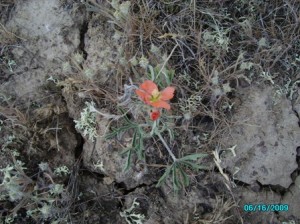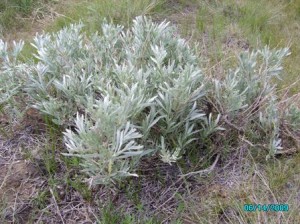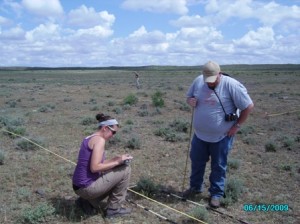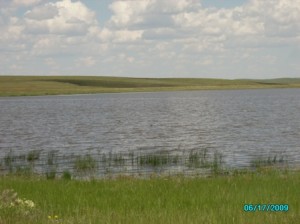As Amy just posted, she arrived in Glasgow on Saturday, and we’ve had quite a fun time introducing her to the sights, sounds, and folks out here! There’s some great people, and we really appreciate all of their kindness and hospitality.
On another note, this blog is headed “What would Grinnell do?” because Amy and I have been trying to follow the field techniques of the famous field biologists, notably Joseph Grinnell, one of the most famous biologists who was seminal to the concept of the species niche based on his observations of California thrashers (similar to our Brown thrashers in Montana but with a much more wicked looking curved beak and a dull brown coat).
Last week was the last day (at least for a while) that I had a chance to accompany Lauren, Marisa, and Matt on one of their habitat surveys at a Greater Sage-grouse lek. This lek had a particularly scenic view with a lake under the sky that looked like gray glass, and we nearly had a rainout scare! As you can see below, the winds started blowing pretty heavily, and we could hear it whistling in our ears! We had to finish our vegetation measurements in a hurry to get out before we’d get stuck in the mud.
While we were finishing up our vegetation surveys, I saw several remarkable flowers. Among them was the sego lily–a first for me–and a really nice prickly pear cactus flower. Another interesting plant is salt bush, which, true to its name, tastes salty. Delicious.
This past week and a half I’ve been starting to set up the censusing protocol for our MAPS station. Amy and I went out to the field this morning and identified 20 species of birds, including American goldfinches, Brown thrashers, an Oriole (either Bullock’s or Baltimore), numerous house wrens and yellow warblers, Field sparrows (rare in the state, apparently), Horned larks, long-billed curlews, killdeer, and most exciting of all, two American kestrels. The American kestrels flew overhead above net 3 and then settled on a snag atop two trees behind a Western meadowlark nest that I found last week. Hopefully the meadowlark family is doing well! We also found another House wren nest today in addition to one we found last week behind net 2, which is in dense ash/cottonwood forest with many, many bugs (mosquitoes, no-see-ums, gnats–the whole gamut of charming pests).
One of the sites at which we will conduct our bird surveys is southeast of the MAPS station overlooking the canopy of trees surrounding nets 9 and 10. This has been a great site for seeing spotted towhees, blackbirds–Brewer’s and Red-winged, American goldfinches, Lark sparrows, Upland sandpipers, and even sharp-tailed grouse!
At that site last week, I saw a proliferation of butterflies on various types of flowers. Recently in the past two weeks or so, at least 3 or 4 butterfly species have come out in full force (white ones, blue-winged ones, and these monarch-looking ones–I’ll get the species names soon), and it would be interesting to see if that corresponds to published dates on their life cycle.
My last bit of exciting news is that I was approved to drive vehicles belonging to the Bureau of Land Management (BLM) last week. Amy is going to do her test soon too, so then it’ll be me and Amy rolling by in a government vehicle on a two-track near you soon!

